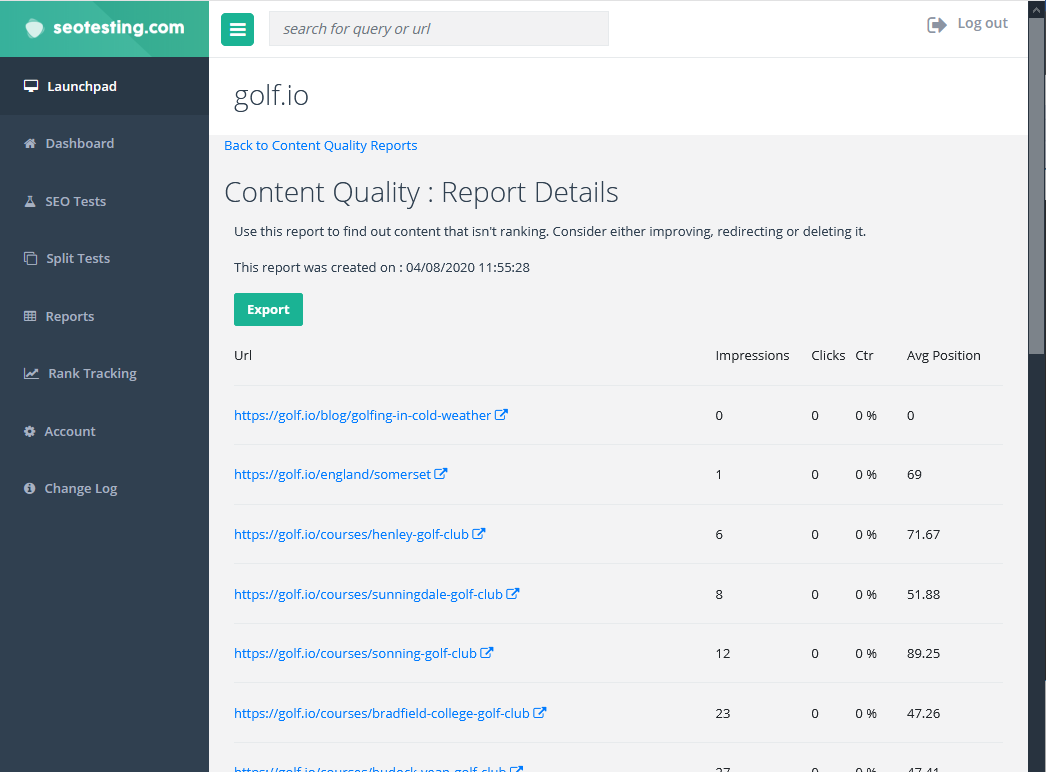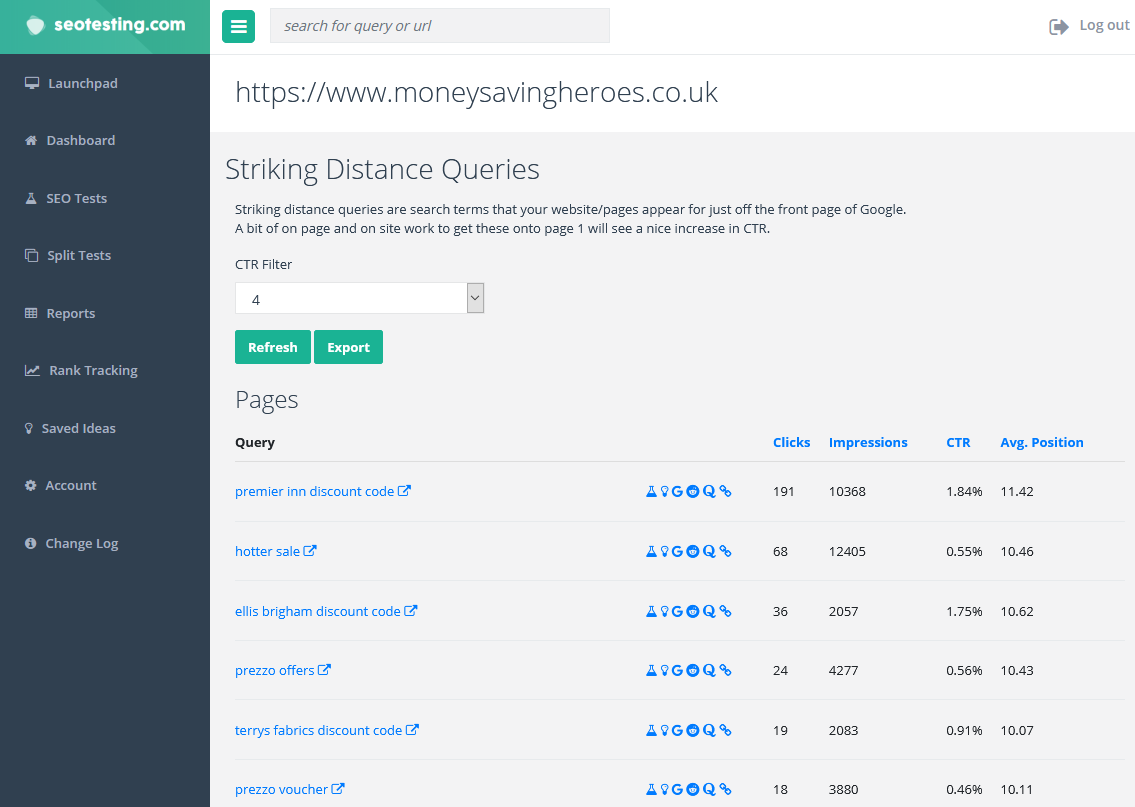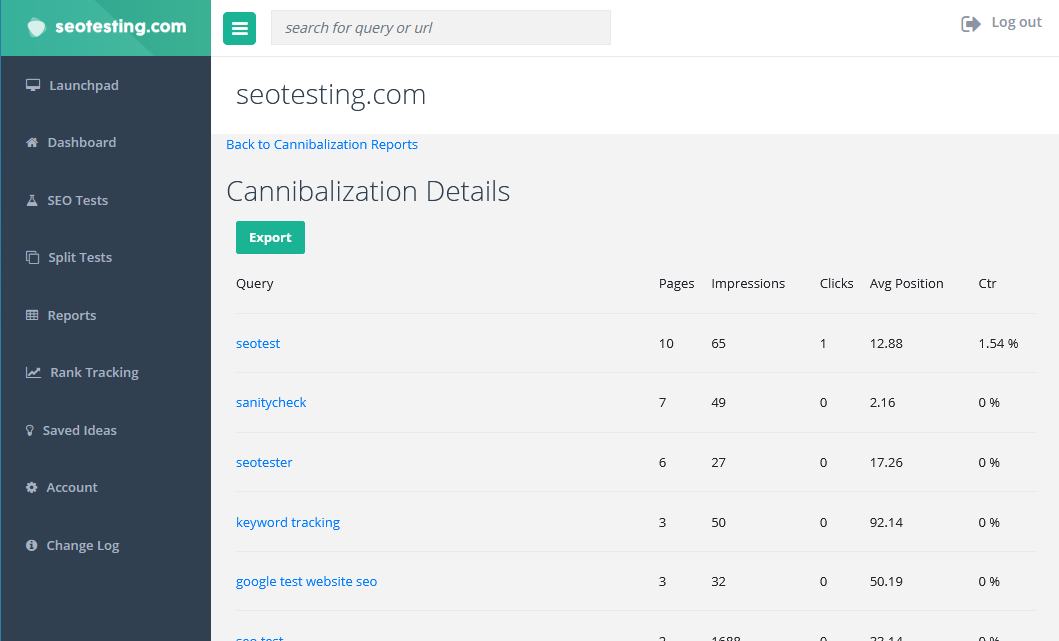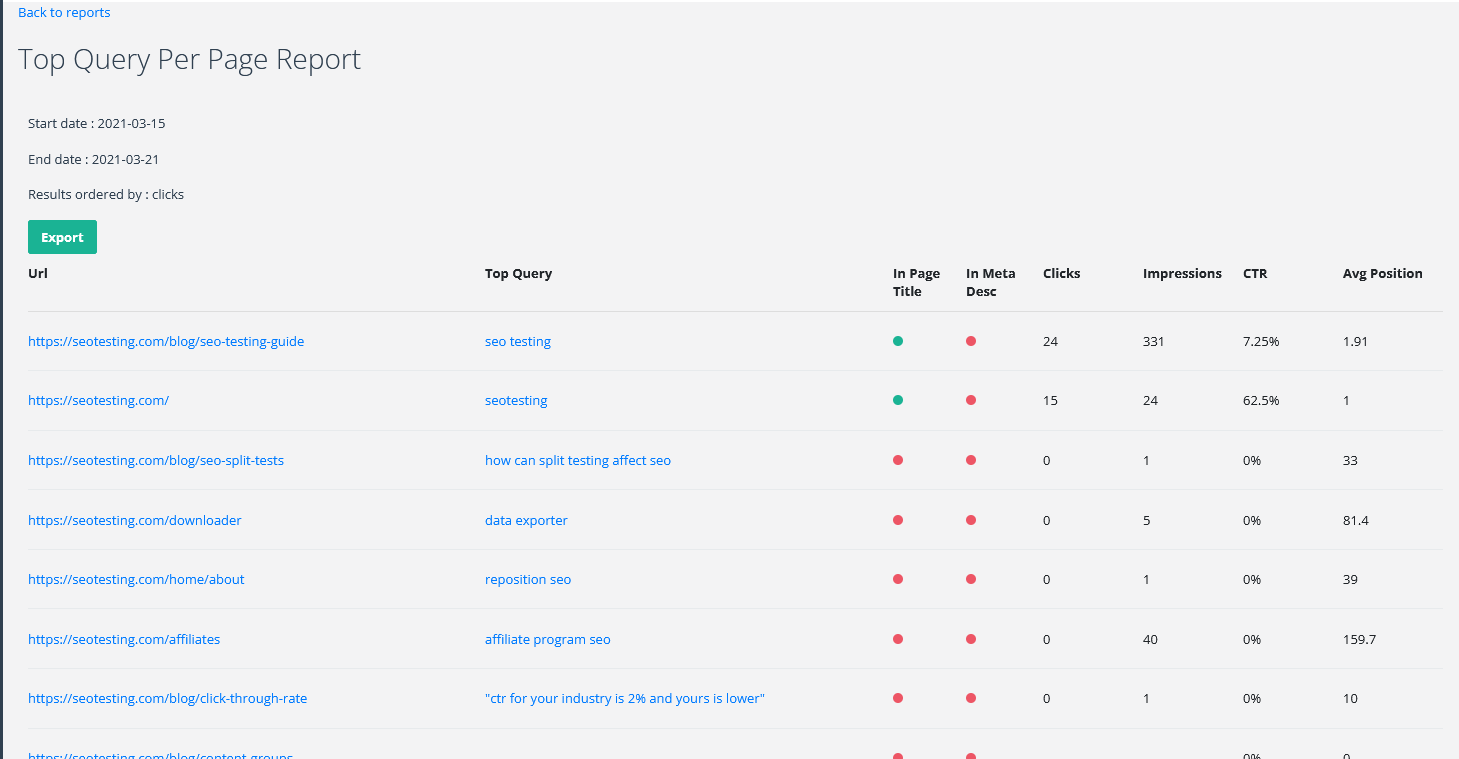Whether you are a freelance SEO, SEO consultant, or working in an agency, it is a difficult balance your time between doing work for clients and pitching for new business.
When you are pitching for new work you are likely to be up against other individuals or agencies. This means you want to be able to demonstrate your knowledge and skills, without spending days of time that you should be spending on your existing clients.

Even though it is a pitch, you still want to be able to provide value to your potential client and information they can take away about their site that allows them to act.
Hopefully that action will be to employ your services, but even if not, you can be comfortable that you’ve provided helpful information that they can use to move forward.
Four of the reports in SEOTesting can help you with these things:
- They take seconds to request and run
- They provide valuable insights you can share with your potential clients
- You’ll get a great idea of the scope of the opportunities available to the site
The only thing you will need is access to their Google Search Console property to be able to add it to SEOTesting and run the reports.
If a client is hesitant to allow this, try explaining:
- You only need access for 24 hours
- You’ll be able to provide them with a content audit, identify click through rate and low hanging query opportunities, and identify any keyword cannibalisation issues, whether they decide to move forward with you or not.
If they are still hesitant, you can also point out that you can pull most of their site’s information about top queries and pages from tools like ahrefs and SEMRush.
Content Quality Report
This report will give you an indication of how much low quality or thin content the website has.
You request the report by entering the sitemap.xml url. SEOTesting will then take each individual url in the sitemap file, and check how many impressions and clicks it has in the organic search results over the past 90 days.

Use the Content Quality Report from SEOTesting.com to quickly find out which pages get limited impressions and clicks in the SERP.
The results of this report will give you an idea whether a further review of historical content is needed, and whether there is scope for cleaning up and pruning of website content.
Websites that have been around a while often have plenty of pages of content that Google doesn’t rate, and you can find them in this report as they’ll have zero or low impressions over the 90 day period.
Striking Distance Keywords Report
The Striking Distance Keywords reports will give you an idea of some high value queries (in terms of impressions) that are just off page 1 of the search results.

This will give you an idea of some quick wins available to you in terms of this new project, and the ability to potentially impress a new client.
Cannibalization Report
The cannibalization report can give you a quick overview on whether a strategic approach has been taken to content creation, or whether the approach has been scattergun.
Generally, it’s better to have one piece of content target an individual keyword or topic. What you often find on aged websites is that multiple pieces of content have been published targeting the same thing.

Easily see which pages are competing with the same keyword across all your content.
This can confuse Google as to which page it should be trying to rank for the keyword/topic, and oftentimes give all the content a poor position in the search results.
The cannibalization report in SEOTesting will give you an idea as to whether cannibalization is an issue with the site, and how much time will need to be put into resolving it.
Click Through Rate Opportunities
Sometimes including the right keyword in a page’s title or meta description can help with an increase in clicks from a page’s listing in the Google search results.
The Top Queries Per Page report in SEOTesting will get the top 10 queries for each url of your site. It’ll also scrape the page title and meta description, and check which of these 10 queries are used.

Easily match your top query with the corresponding page.
Often you can find a lot of instances where a page’s top query hasn’t been used, and so including it in a page title and/or meta description will bolden the term to the user in the search results and be more likely to grab their focus and clicks.
Running this report will give you a quick idea how much opportunity there is for a site to improve their page titles and meta descriptions based on the queries the pages are showing in Google for. Running SEO tests for Page Title changes is something that can be done every month as part of an ongoing client retainer.
Has the site been affected by Google algorithm updates?
As well as the reports listed above, you’ll also be able to use the main dashboard graphs within SEOTesting to see if the site has been affected by confirmed Google Algorithm Updates.
These algorithm updates are annotated on the graphs, and a click on summarizing the data by weeks or months can make it easier to spot any drops or uplifts around the time of an update.
If you find an update that has been positive or negative, you can click on it and get taken straight to the ‘Compare Period’ graphs for urls and queries of the site. This will allow you to look at the week either side of the algorithm update to discover which pages and queries were positively or negatively affected.
Conclusion
While SEOTesting can help you track the results of your SEO changes and experiments, it also has a number of reports that you can run regularly for clients as part of a content audit, or as part of your new business and pitching process.
There’s a free 14 day trial, so you can give these reports a run on your next pitch. Please let us know how you get on!

